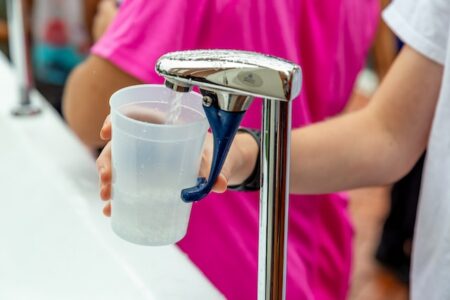
(PHOTO BY lUANN HUNT/UNSPLASH)
Not all tap water is equal. If you’ve never lived in a state with bad tap water, you might not realize why it’s such a big deal. However, if you’re from a state with terrible tap water, you know just how important it is to keep a water filter or bottled water in the house! This article uses information from a US News report, and taste is a matter of opinion. With that in mind, let’s take a road trip through America’s best—and worst—drinking water.
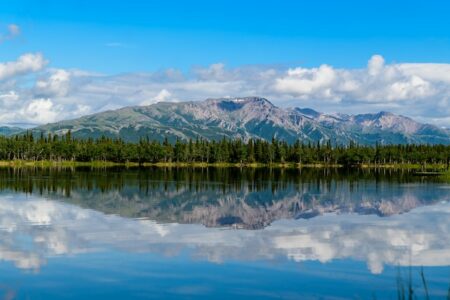
(PHOTO BY NARI NANDAKUMAR/UNSPLASH)
50. Alaska
The state farthest north is also the state known for its variable water quality. While some parts of the remote state sport pristine water straight from the tops of icy mountains, other regions rely on private wells that are full of contaminants. As such, Alaska has scored last in all fifty states in terms of water quality. For those looking to move to the region, they’ll want to watch out for radium in the groundwater. Those who live near refineries are at heightened risk of exposure to the radioactive element.

(PHOTO BY DAVID BANNING/UNSPLASH)
49. Montana
Montana has some of the worst drinking water in the country. As far as the contiguous US goes, Montana is at the very bottom, coming in 49th. The only state with worse water quality than Montana is Alaska. The water is so bad in the state that tap water in some regions isn’t actually potable (in other words, drinkable) and needs to be filtered before it’s fit for human consumption. This is no laughing matter and requires immediate attention from the state’s authorities.

(PHOTO BY MIRO VLIK/UNSPLASH)
48. Vermont
Vermont is a beautiful state with breathtaking mountains. However, as much as the residents might hate to admit it, the state has some of the worst tap water in the entire country. The state is rated 48th overall in terms of water quality! The problem in question for Vermont is the proliferation of blue-green algae in lakes throughout the state, including the major water source of Lake Champlain. This algae is extremely dangerous to drink, necessitating the use of filters to make water from Vermont taps safe for normal uses.

(PHOTO BY SAVANNAH ROHLEDER/UNSPLASH)
47. Maine
Maine’s unusual geography has it scoring very close to the bottom of the list. The northernmost state in the contiguous US comes in at 47th on the drinking water list. The main issue for Maine (pun fully not intended, this is serious) is a high level of arsenic detected in a high percentage of wells tested by the EPA. Arsenic is a major carcinogen, making its presence in the state’s drinking water a major cause for concern. If you live in the state, stick to filtered water.
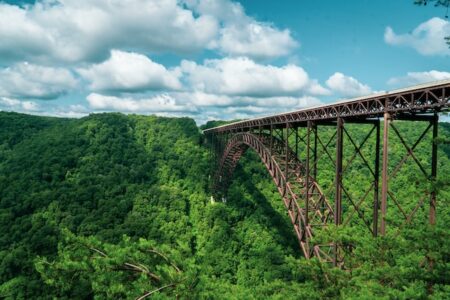
(PHOTO BY SHAROSH RAJASEKHER/UNSPLASH)
46. West Virginia
West Virginia comes in at number 46 overall for tap water quality. The state is plagued by the presence of PFAS in the tap water from a high-profile chemical spill. The 2014 Freedom Industries spill made national headlines and has given the state a reputation for unsafe drinking water. The state has initiated legislation to undergo new testing procedures and treatment policies to increase the quality of the drinking water, though these initiatives are still in their earliest stages. Hopefully, West Virginia can clean up their water soon.

(PHOTO BY J. AMILLSANTIAGO/UNSPLASH)
45. Oklahoma
Oklahoma sports some of the very worst tap water in the country, with their surface water reservoirs being extremely susceptible to contamination. The main issue plaguing the state is heavy metal contamination. Heavy metal contamination is extremely difficult to remove from water, even with robust treatment facilities. Whatever the reason for the contamination, the presence of these heavy metals makes the state’s water supply suspect for locals and visitors alike. Filters can help, but if you’re concerned about heavy metals in your drinking water, you might stick to bottled.
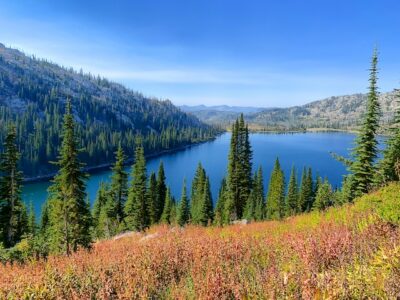
(PHOTO BY PORTER RAAB/UNSPLASH)
44. Idaho
Regions with significant agricultural activity aren’t exactly known for their water quality. Idaho, sadly, is no exception: the western state ranks only 44th overall on the list. This is due almost entirely to groundwater contaminants from farming activities that pollute the state’s water supply. In 2019, the biggest concern in the state’s water supply was arsenic. Things got so bad that the EPA had to pull its approval of the state’s standards that year until the state government got things back under control.
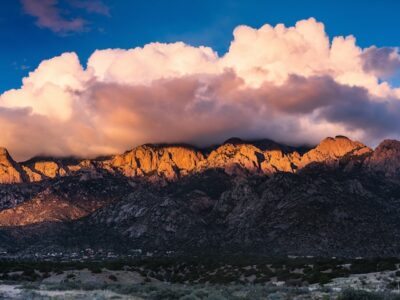
(PHOTO BY RAYCHEL SANNER/UNSPLASH)
43. New Mexico
New Mexico has some of the worst water in the country. Despite the poetic nickname, the Land of Enchantment has water that will leave you reeling. The runoff from military bases is the main concern in the water for the state. Tighter controls on military activity in the region are required to reduce the presence of these contaminants. Another major issue for the state’s groundwater is the presence of arsenic. It turns out New Mexico’s water is not so enchanting after all.

(PHOTO BY TOM NEHELL/UNSPLASH)
42. New Hampshire
The water in New Hampshire is some of the lowest-ranked in the country. Only eight states have worse water than New Hampshire, and it’s easy to see why. The vast majority of the water suppliers in New Hampshire are extremely small, serving under 3000 people each. That’s a lot of room for extreme variance. The well water that serves most homes in the state is often high in arsenic. If you live in New Hampshire, make sure you’re filtering anything you get out of the tap.

(PHOTO BY CORA LEACH/UNSPLASH)
41. Wyoming
Wyoming is the only state in the US that doesn’t actually have the authority to administer its public water supply. This means that the EPA has to handle the state’s water in lieu of the state legislature, though this hasn’t made much of a difference for the state. Wyoming’s tap water is not great, coming in at number 41 nationally. Radium and uranium are the two main contaminants responsible for the state’s poor water quality. Like other states with similar contaminants, these radioactive elements could pose a threat to those who drink the water in Wyoming.
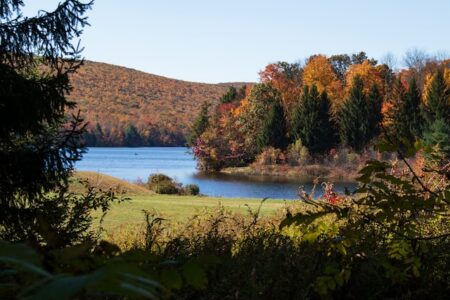
(PHOTO BY RYAN STONE/UNSPLASH)
40. Pennsylvania
Pennsylvania rounds out the bottom ten states for tap water, coming in at number 40. This score is mostly due to failings with the state’s public utilities. The presence of organic matter in many of the state’s water systems is the main culprit, with decaying leaves and other materials adding serious contaminants. Most homes in the state get tap water that is considered “hard,” making the use of filters in the home almost necessary to safely drink tap water in the region.
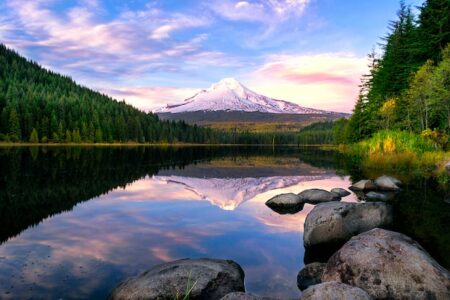
(PHOTO BY ATANAS MALAMOV/UNSPLASH)
39. Oregon
Oregon doesn’t have the best tap water by a long shot. The state only ranks in at number 39 nationally, narrowly missing the bottom ten thanks to some communities sourcing very clean water from Mt. Hood. Most regions of the state, however, struggle with high pH levels and contaminants that make the water far from ideal. The main culprits in the southern part of the state are aquifers, many of which are overtaxed and contribute toxins to the water supply.

(PHOTO BY TAYLOR SIEBERT/UNSPLASH)
38. Nebraska
Nebraska’s drinking water leaves a lot to be desired, with the state struggling in at number 38 on our list. The state relies primarily on groundwater for its drinking water, which means that agriculture has a massive impact on the quality of the tap water. Of course, given that Nebraska is home to considerable amounts of agriculture, this means the water is less than ideal. The common issue of nitrates plagues Nebraska, just like it does so many other rural states.
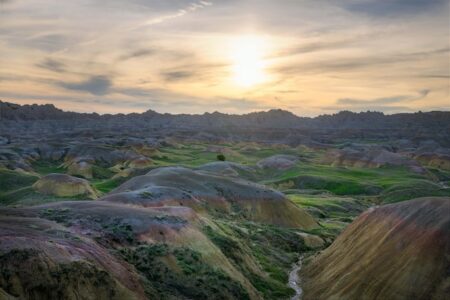
(PHOTO BY KEVIN WENNING/UNSPLASH)
37. South Dakota
Unlike its neighbor North Dakota, South Dakota has rather disappointing water quality marks. The state scores number 37, while its northern neighbor and rival North Dakota comes in at number 20. While neither of these is ideal, South Dakota fares far worse. The worst part is that the situation is only worsening over the years. Over 80 percent of the rivers in the region are unfit for swimming and fishing, with contaminants like trihalomethanes and haloacetic acids appearing in alarming concentrations.

(PHOTO BY MATTHIAS MULLIE/UNSPLASH)
36. Utah
Utah is known as the “thirstiest” state in the US due to its extremely high water consumption per capita. The state’s high altitude could be part of the reason for this, though some Utah residents might want to know that their state’s drinking water is ranked number 36 in the country. This low ranking is due to radium contamination, which is more problematic in Utah than in most other states. This is a dangerous carcinogen that can cause serious cellular damage with prolonged exposure.
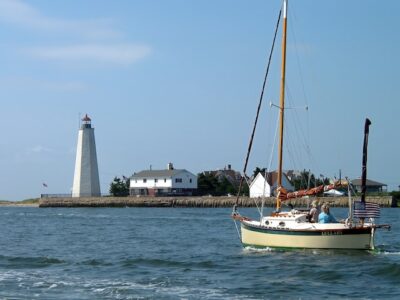
(PHOTO BY RUSTY WATSON/UNSPLASH)
35. Connecticut
The New England state of Connecticut scores reasonably low on the list, coming in at number 35. New England as a whole has some issues when it comes to water purity levels, owing primarily to population density. Millions upon millions of people live in a very dense geographical area, with major cities from New York to Boston to Jersey City dotting the region. That impacts even the more rural parts of the less populated states. The issue in Connecticut isn’t contaminants in the groundwater, but instead, disinfectants used to clean the strained water supply. These can bleed over into purity violations, namely chloroform and other byproducts becoming present in the drinking water.
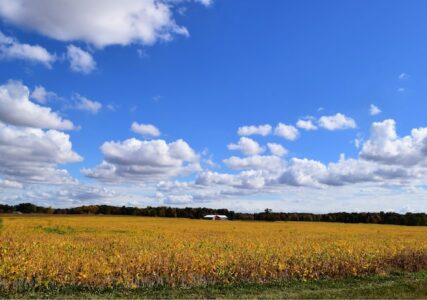
(PHOTO BY GINGER JORDAN/UNSPLASH)
34. Indiana
Indiana finds itself in the middle of the pack. At 34th place, no one is writing home about the water quality in the Midwestern state. The main concern for the EPA when it comes to Indiana’s water supply is a high concentration of haloacetic acids. These are the byproducts that occur when chlorine is used to disinfect drinking water. Long-term exposure to high levels of these compounds could increase the risk for certain types of cancer.
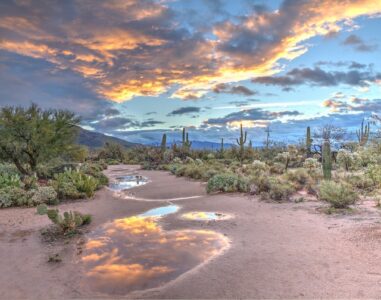
(PHOTO DUCLEY LIMA/UNSPLASH)
33. Arizona
The desert plains of Arizona aren’t the first thing that comes to mind when someone says “clean drinking water,” but the state scores reasonably well. Their rating is a respectable 33, which is owed to the absolute lack of rain in the desert state. The number of violations in private water systems in the state has been steadily on the rise in recent years, however. The problem contamination in the state is nitrate, a carcinogen that is known to cause serious lingering health problems.

(PHOTO BY DEBORAH RANEY/UNSPLASH)
32. Missouri
Missouri, like much of the Midwest, struggles with maintaining clean drinking water for its residents. The biggest issues in the state are contaminants from dead leaves and other decaying organic matter that can seep into the watershed. The state ranks a mediocre 32nd overall on the list, putting it firmly in the lower half of our rankings. One of the biggest contaminant concerns in the state’s water is radium, a substance that is a known carcinogen. Prolonged exposure to radium has a pronounced negative effect on health.
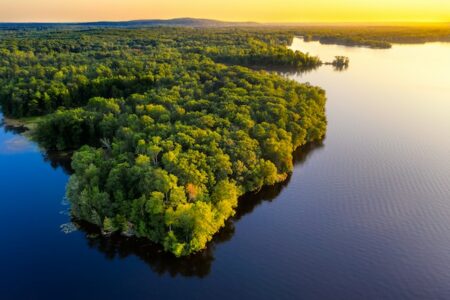
(PHOTO BY DAVE HOEFLER/UNSPLASH)
31. Wisconsin
Wisconsin has a middling reputation as far as water quality goes. The state ranks in at number 31 overall in terms of water quality, though the state isn’t unique in its blend of contaminants. Nitrates, bacteria, manganese, and arsenic all present major challenges for the state’s water supply. However, in some areas, the main concern is actually contamination from aging lead pipes. Lead poisoning is a major issue in some parts of the country as old infrastructure begins to contaminate water systems.
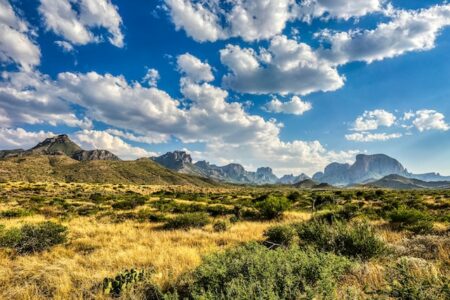
(PHOTO BY MICK HAUPT/UNSPLASH)
30. Texas
Everything’s bigger in Texas, right? Well, unfortunately for the Lone Star state, a bigger number isn’t better on this list. The state scores a mediocre number 30 on the national rating for drinking water and is consistently rated among one of the states with the worst-tasting tap water. The state has made headlines in the last decade for several high-profile contamination events. The worst part is that most of these events haven’t come to clear resolutions. Residents in the state should rely on water filters to keep contaminants out of their drinking water.
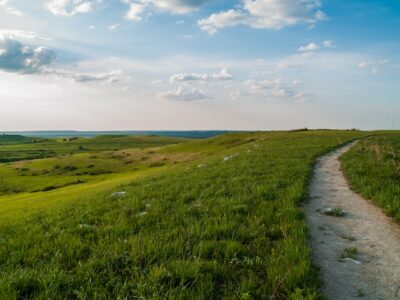
(PHOTO BY MARY HAMMEL/UNSPLASH)
29. Kansas
Unsurprisingly, the state in the middle of the country is also in the middle of the pack when it comes to drinking water quality. Kansas falls in the list at number 29, a respectable, if mediocre, showing. This placement might surprise some who have visited regions like Kansas City, which is known for good-tasting drinking water. The state’s placement owes mainly to the region’s susceptibility to extreme weather. Storms and flooding can bring contaminants into the groundwater, causing issues like increased nitrate counts and a high degree of water hardness.
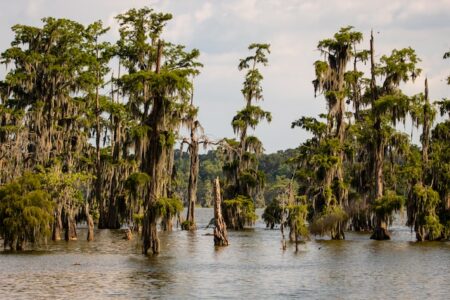
(PHOTO BY JOSHUA J. COTTEN/UNSPLASH)
28. Louisiana
Louisiana doesn’t score as highly on pure water marks as many of its neighbors. The state isn’t doing poorly, per se, coming in at 28th. However, it’s not doing as well as, say, Alabama or Mississippi. Unfortunately, Louisiana has been on a downward track with regards to its water quality in recent years. Contaminants in the water system in recent years have included high levels of THMs, haloacetic acids, radium, arsenic, and other problematic materials. All of these can cause serious health issues with prolonged exposure, making Louisiana’s worsening water quality a major concern.
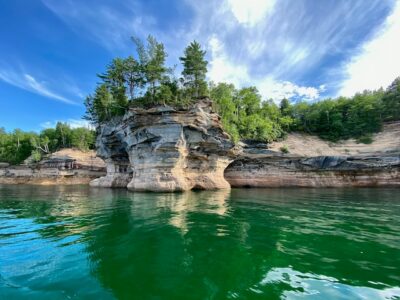
(PHOTO BY CHARLIE WOLLBORG/UNSPLASH)
27. Michigan
You might expect to see Michigan’s tap water rated the worst on this list. The crisis relating to Flint, Michigan’s deadly and undrinkable tap water received widespread media attention that has affected the national perception of the state’s water supply. However, Michigan comes in number 27 on the list. The state has reportedly taken pains to shore up the region’s water quality, though these claims have been met with extreme skepticism from many. Mistrust for the government is high in Michigan, but the EPA also claims the water in the area is up to standards.
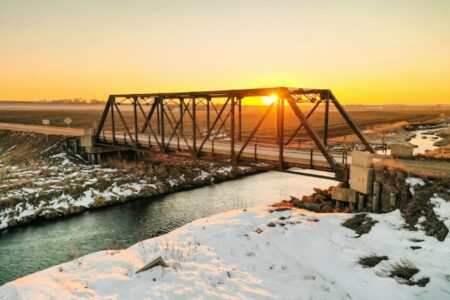
(PHOTO BY JOSH BERENDES/UNSPLASH)
26. Iowa
Iowa finds itself right at the middle of the pack, coming in at number 26 on the list of states with the best drinking water. This is due largely to the state’s reliance on public water systems, which are generally regarded as being serviceable but not great. The main concerns regarding the state’s water supply are nitrates and bacteria that occur in some of the state’s private wells. For those on public water, this is not a concern. However, if you tap into Iowa’s private systems, be aware of this potential problem.

(PHOTO BY JOSHUA J. COTTEN/UNSPLASH)
25. Arkansas
Arkansas comes in at the exact middle of the pack. The best thing about Arkansas’s water is that it’s consistent across the state. Also, the number of contaminates is refreshingly low. Among the states in the region, Arkansas is a reasonably well-regarded state in terms of water quality. The state is aided by the presence of Hot Springs National Park, a massive reservoir of clean drinking water. We’re giving Arkansas a solid C+ for their tap water.

(PHOTO BY ELIJAH MEARS/UNSPLASH)
24. North Carolina
North Carolina is an outlier among its Southern neighbors, sporting a relatively low ranking at number 24 in the country. While that might seem like a decent rating, it’s a joke compared to the state’s neighbor, South Carolina, which boasts an impressive public water system. North Carolina’s water supply suffers from its high concentration of military bases and industrial manufacturing plants. Runoff from these locations routinely seeps into the state’s water, with contaminants like bromodichloromethane appearing in the drinking water. Thankfully, these can be filtered out with most household water filters.
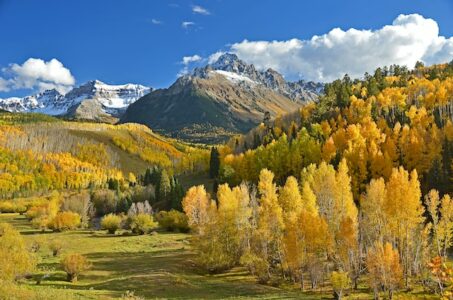
(PHOTO BY THOMAS MORSE/UNSPLASH)
23. Colorado
Colorado is the kind of state you might expect to be high on this list. It’s got a reputation for being environmentally friendly, there are plentiful mountains to provide clean meltwater, and the populace is surely discerning when it comes to water, right? Well, not exactly. Colorado comes in rank 23, due in large part to the agriculture in the region. Issues like nitrates, haloacetic acids, and THMs can back up considerably when there is a large agricultural footprint in a state.
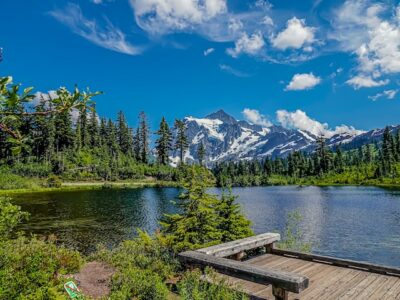
(PHOTO BY PAVL POLO/UNSPLASH)
22. Washington
Over in the Pacific Northwest, Washington ranks number 22 overall in terms of water quality. This is in spite of some common complaints about the water in the state, including the presence of some common contaminants. The main contaminants at play in Washington’s water supply are arsenic and bromodichloromethane, though some concentrations of THMs also occur in the state. In spite of all this, however, the state still scores reasonably well thanks to the presence of high-quality water treatment facilities.
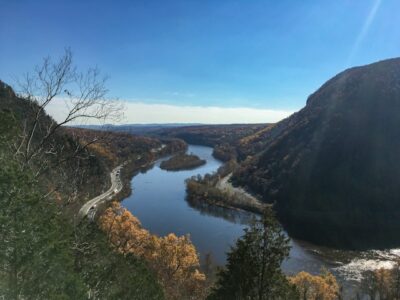
(PHOTO BY MIKE RALPH/UNSPLASH)
21. Delaware
Despite its close proximity to many population centers, Delaware manages to hit number 21 on the overall ratings list for drinking water. Roughly eighty percent of people in the state get their water from the public infrastructure. Delaware residents enjoy fewer than the national average of water contaminant violations. The state’s biggest concern with drinking water is the ever-present specter of nitrates in industrial runoff that can affect groundwater. Aside from this, Delaware’s water is very clean. Good work by the second-smallest state in the Union!

(PHOTO BY JEFF DEWITT/UNSPLASH)
20. North Dakota
The water in North Dakota can be accurately described as “okay.” The state ranks number 20 overall in terms of the quality and purity of its drinking water—an impressive number when compared to South Dakota’s disappointing entry at number 37. The state had pretty terrible water as little as a decade ago, but recent upgrades to the public infrastructure have made simple filters plenty to keep the worst of the now-manageable contaminants out. This is a success story for the rural Northern Plains state.

(PHOTO BY TOM HENELL/UNSPLASH)
19. Rhode Island
Rhode Island, the smallest state in the country, sports the best air quality in the nation. As such, you might expect it to score high marks on water quality, too! However, it only scores in at number 19. The same minor incidents of contaminants seen in much of New England also plague this state. The main culprit, as usual, is the presence of THMs. This group of four disinfection byproducts can be trigger by chlorine interacting with the microbes in drinking water.

(PHOTO BY JOEL PROTASIO/UNSPLASH)
18. Nevada
In a turn that might surprise some, Nevada has respectable drinking water, coming in at number 18 on this list. The state is located in the Mojave Desert, meaning that it relies on water from the Hoover Dam for all of its residents. However, this controlled environment allows for a great deal of clean drinking water to reach the people. The main concern in the state is perchlorates, chemicals used in rocket fuel that have plagued the state since the atomic tests of the 1940s and 1950s.
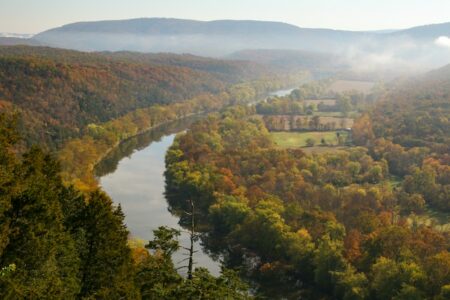
(PHOTO BY LIZ GUERTIN/UNSPLASH)
17. Maryland
While some people might argue about whether or not Maryland is a proper Southern state, there is no argument that Maryland’s water quality is doing just fine. The state ranks number 17 overall in terms of the quality of its drinking water. It’s not all good news, though. The state has some weaknesses: THMs and haloacitic acids still appear in alarming numbers in some water systems in the region. The state’s authorities have agreed that these areas need the biggest investment and will be addressing them in the coming years.
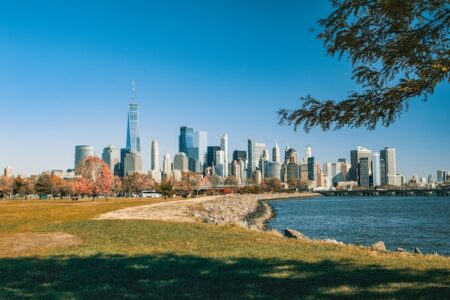
(PHOTO BY JOEY PEDRAS/UNSPLASH)
16. New Jersey
New Jersey’s rating is going to surprise you. The Garden State comes in at number 16 on the national ranking of clean drinking water. That’s downright impressive given the state’s population density and proximity to the ocean (and, of course, New York City). The majority of water for the state comes from surface water sources like lakes and reservoirs, meaning that there is a high likelihood of contamination. However, the state’s water purification facilities work tirelessly to keep this from becoming an issue for residents.
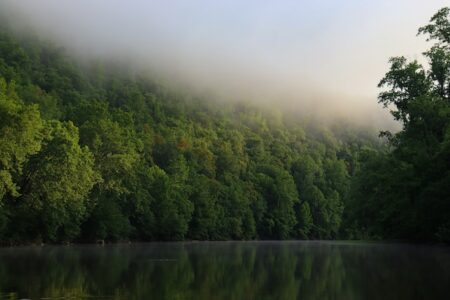
(PHOTO BY TYLER HELD/UNSPLASH)
15. Virginia
Virginia comes in at number 15 overall in the US for its water quality. This is a great score, but it’s a bit lower than some of the state’s Southern neighbors. Virginia’s slightly lower rating owes to the unusually high levels of trihalomethanes and haloacetic acids in the water in some parts of the state. This is partly because of geography. Virginia is located slightly outside of the robust river and aquifer system that feeds much of the rest of the Southeast.
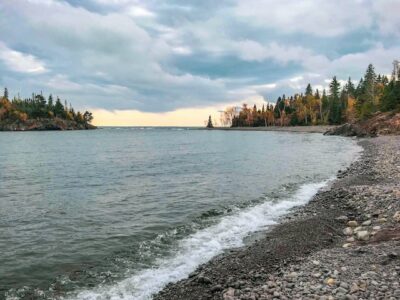
(PHOTO BY LAURA KESSLER/UNSPLASH)
14. Minnesota
The far northern state of Minnesota is at a solid spot on our list, coming in at number 14. The state relies primarily on groundwater, which can be a concern in some regions. After all, groundwater is extremely susceptible to things like agriculture and industrial runoff. Thankfully for Minnesotans, the state’s water is very clean despite the potential for contaminants. The state uses advanced water treatment facilities to keep the water clean and drinkable. All-in-all, the state is respectable in terms of its water infrastructure.

(PHOTO BY PAUL HANAOKA/UNSPLASH)
13. California
This one isn’t exactly fair, as California is a downright gigantic state that spans extremely varied topographies, biomes, and demographics. However, the state technically scores number 13 on the ranking list, making it a very respectable state in terms of clean drinking water. Southern California is mainly watered by the Colorado River Aqueduct, while the Bay Area relies on the Hetch Hetchy reservoir at Yosemite. The rest of the state is largely reliant on imported water, meaning common contaminants like nitrates are as much an issue in rural parts of California as the rest of the country.

(PHOTO BY MIKE C. VALDIVIA/UNSPLASH)
12. New York
The state of New York takes number 12 nationally, with special recognition reserved for New York City. The Capital of the World, as some call it, is home to millions of people. As such, it’s pivotal that the city is served by state-of-the-art water treatment facilities. The result is some of the best drinking water in a densely populated metropolitan area anywhere on the planet. Much of the drinking water in the surrounding cities in the Upstate is also excellent, according to EPA surveys.

(PHOTO BY MICHAEL BOWMAN/UNSPLASH)
11. Ohio
Ohio’s tap water is just fine, ranking in at number 11 nationally. Just missing the top ten sounds like cause for celebration, but authorities in Ohio know that there are ways they could make the water quality in the state even better. For instance, the state’s more rural areas sport unhealthy levels of contamination from E. coli bacteria. Also, the common agricultural threat of PFAS levels in the groundwater is present in Ohio. The state’s water is good on the whole, but a few problem spots should have authorities moving to shore up the state’s water supply for future generations.
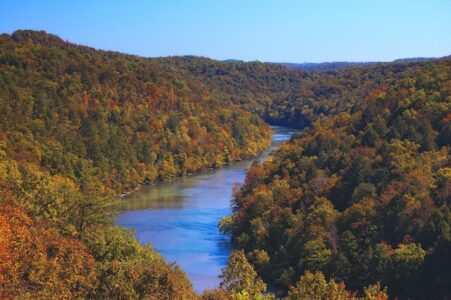
(PHOTO BY JOSHUAMICHAELS/UNSPLASH)
10. Kentucky
Once again, the Southern region of the country scores a commendable spot on the list, with Kentucky snagging the number ten spot. The state sports excellent infrastructure and plentiful public water reserves, allowing for great-tasting and clear water to flow through the taps. The only concern came in 2019 with some high levels of thallium detected in private wells. Thallium is a known carcinogen, as prolonged exposure to this material can cause damage to cellular structures. However, the issue has since been resolved.
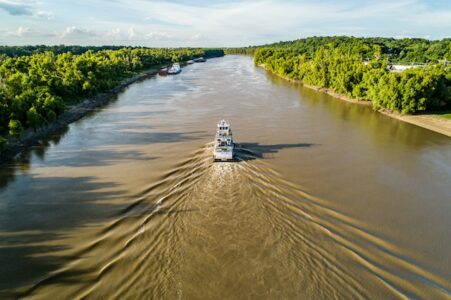
(PHOTO BY JUSTIN WILKENS/UNSPLASH)
9. Mississippi
Mississippi comes in at number 9 on the list, joining most of the South as a bastion of clean drinking water. The myth of an uneducated and dilapidated region that functions as a backwater in the US is about as far from reality as it gets when you look at the Southeast’s excellent water quality. This isn’t to say the region doesn’t have its issues: education and public health still struggle in the Southeast. However, one thing the region doesn’t have to worry about is clean drinking water. You’ll find multiple states from the South in the top ten!

(PHOTO BY MICHAELBACCIN/UNSPLASH)
8. Massachusetts
Massachusetts isn’t any New Englander’s favorite state, according to surveys and polls. The state is reported to have extremely bad traffic, too many toll roads, and many people describe the culture in the state as prickly at best. However, Massachusetts is number one in one thing: it sports the cleanest water in New England. The state ranks number 8 overall, making it a major outlier in the densely populated region. Well, there’s at least one good reason to visit Boston: the water might be better than what you might find in surrounding cities!
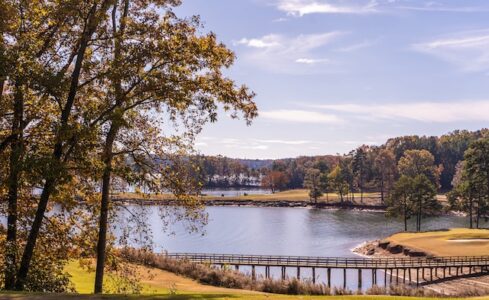
(PHOTO BY BRANDON CARSON/UNSPLASH)
7. Georgia
The Peach State (which produces fewer peaches per year than neighboring South Carolina) comes in at number seven on our list of the best tap water in America. Georgia owes its ranking to excellent infrastructure. If this surprises you, get ready to be surprised more: the Southeast cleans up on this list. Although Atlanta is a densely populated major city, Georgia’s infrastructure manages to keep the taps flowing with safe, clean water for all. The next state on the list is also from the South—and it might shock you to know how great the drinking water is there.
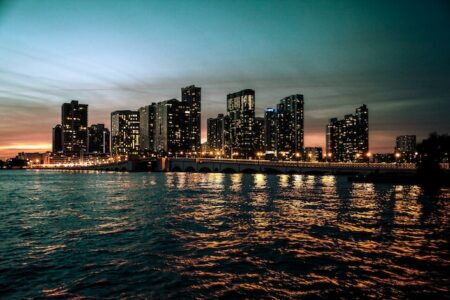
(PHOTO BY JOSE GARCIA/UNSPLASH)
6. Florida
Florida? That’s right: Florida! Despite its reputation as a hot, swampy state full of chaotic encounters with wildlife and the legendary “Florida Man,” the southernmost state in the mainland lands at an impressive number six spot on the list. The state’s clean drinking water, in spite of its subtropical climates and frequent storms, is a testament to the strength of Florida’s infrastructure. Water purification facilities in the state are truly world-class. Next time someone dunks on the state, you can remind them of this little piece of trivia.
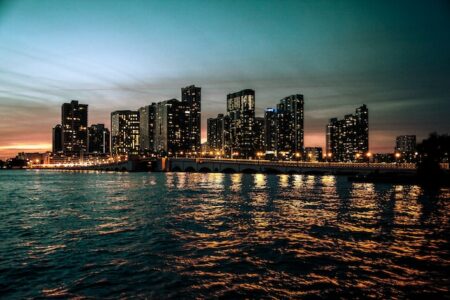
(PHOTO BY BRE SMITH/UNSPLASH)
5. South Carolina
South Carolina scores in at an impressive number five overall in the country. The state boasts the softest drinking water of any state in the nation, with water that is smooth and great-tasting straight from the tap in most parts of the state. (Full disclosure: this author is from South Carolina, and I can attest that the water here is great.) The state relies on a robust public infrastructure for its water that purifies and cleans the already low levels of contamination out of the water reserves.
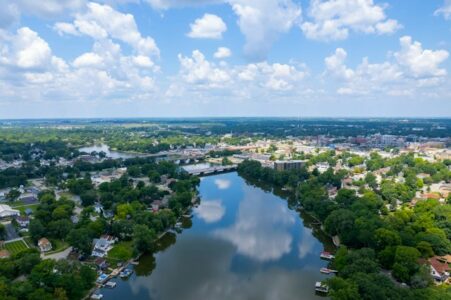
(PHOTO BY ZANDER BETTERTON/UNSPLASH)
4. Illinois
The home of the third-largest city in the US (Chicago) is an impressive specimen when it comes to water quality. While some regions of the state have rough spots in terms of water purity, the state as a whole has extremely well-regarded water taste and health. Overall, the state ranks fourth on the list. The only major concerns in the state’s water supply come in the form of lead and copper contamination. In recent years, the state is said to have encountered more difficulty with purification, though it’s been historically regarded as an excellent example to other regions with high population density.
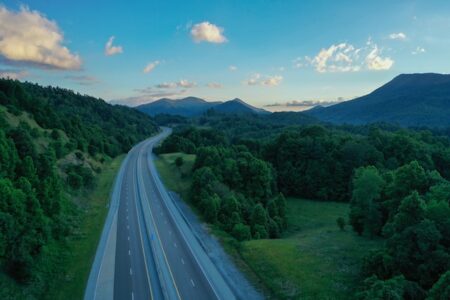
(PHOTO BY NATHAN KOSMAK/UNSPLASH)
3. Tennessee
Like neighboring South Carolina and Alabama, Tennessee sports some of the best water in the country. The state comes in at a downright impressive third nationally, cracking the top five for its smooth, clean tap water. For those who aren’t from the region, the Southeast fares so well in terms of water for a few reasons. The main reason for this excellent water quality is a robust stream system and natural aquifers that feed a steady supply of natural clean water. Bottoms up, Vols!

(PHOTO BY UWE CONRAD/UNSPLASH)
2. Alabama
Alabama comes in second in the US News report of all 50 states’ tap water. The assessments of Alabama’s drinking water have been pretty good across the board, in spite of the state getting about fifty percent of its water from surface sources. This can be a problem, as surface water is more susceptible to contaminants than other water sources. In 2019, twenty percent of private water systems in Alabama were found in violation of contaminant safe levels. However, none of the violations were considered a serious health risk.
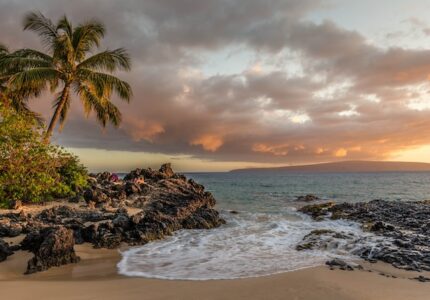
(PHOTO BY CHRISTIAN JOURDEY/UNSPLASH)
1. Hawaii
Hawaii is the number one state when it comes to clean drinking water. That might be surprising, given that the islands are surrounded by saltwater. However, the island chain in the middle of the Pacific relies almost entirely on natural water purification systems. Water seeps through volcanic rock to keep the population provided with clean drinking water. Think of it as nature’s carbon filter! Water filtered through volcanic sediment is almost guaranteed to be clean and free of contaminants. Fire purifies, after all.

Comments
Loading…